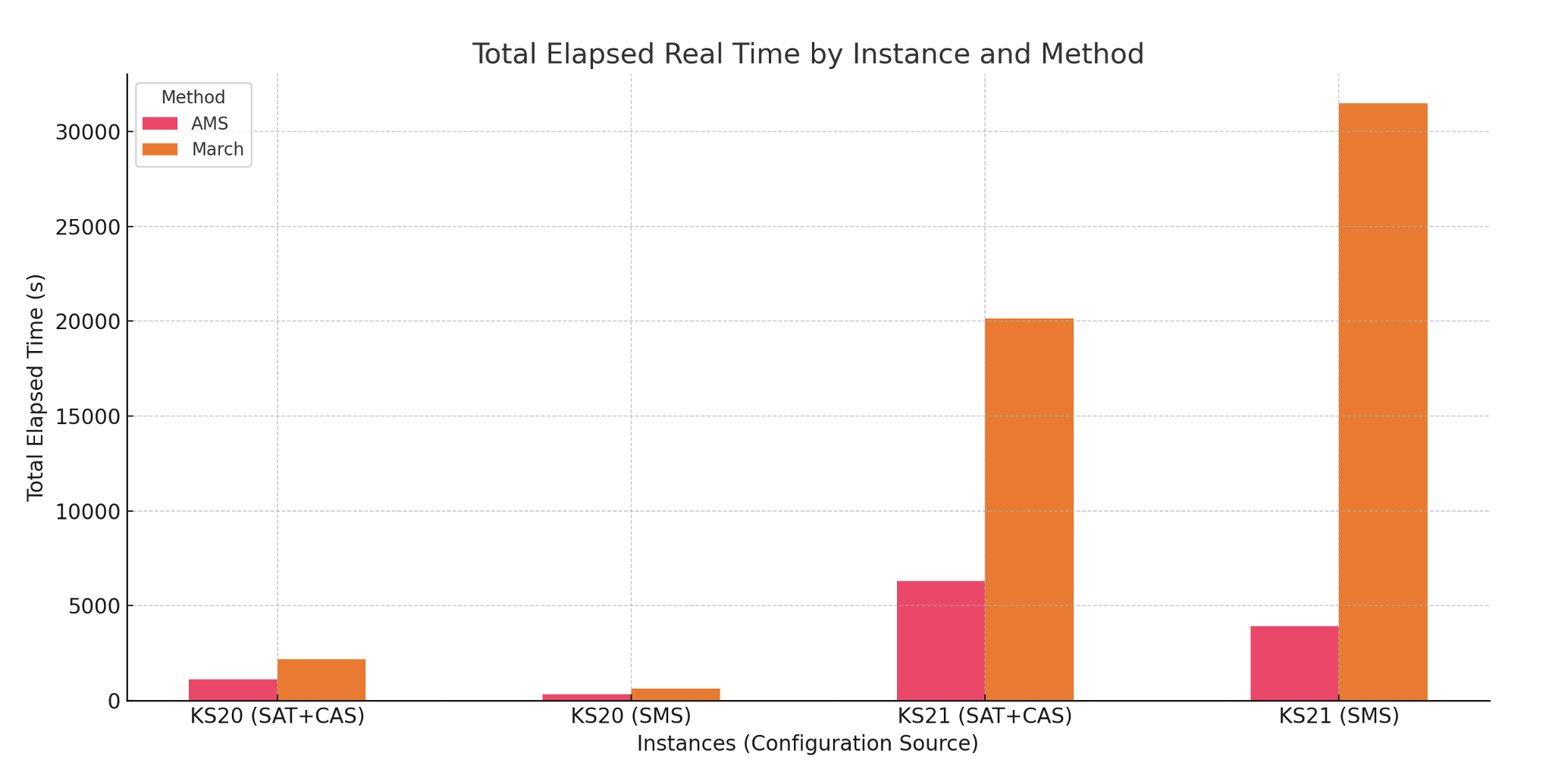AlphaMapleSAT


Overview
Authors: Piyush Jha†,1, Zhengyu Li†,1, Zhengyang (John) Lu2, Curtis Bright3, Vijay Ganesh1
Affiliations: 1Georgia Institute of Technology, USA | 2University of Waterloo, Canada | 3University of Windsor, Canada
† Equal contributions
TL;DR
AMS integrates Monte Carlo Tree Search (MCTS) with deductive feedback—using propagation rate via unit propagation—in the Cube-and-Conquer paradigm to guide cubing. By focusing exploration on promising cubes it reduces wasted work and achieves up to an 8× wall-clock speedup versus March on the hardest Kochen–Specker and Ramsey instances.
Key ideas
- MCTS-guided cubing with deductive rewards (propagation rate via unit propagation) to prioritize promising branches.
- PUCT-based selection without neural nets; priors from BCP counts.
- Boolean Constraint propagation (BCP) feedback from deeper exploration improves partition quality.
- Keeps cubing costs low with lightweight simplification and incremental solving.
Pipeline (summary)

- Input: CNF formula
- Cubing: MCTS + deductive rewards to generate cubes
- Conquer: solve cubes in parallel with CDCL workers
- Output: SAT / UNSAT
Results snapshot
We evaluated AMS on challenging benchmarks such as the Kochen–Specker and Ramsey problems. The bar chart above shows total elapsed wall-clock time per instance (AMS in pink, March in orange). AMS achieves up to an 8× end-to-end speedup on the hardest instances.

Key takeaways
